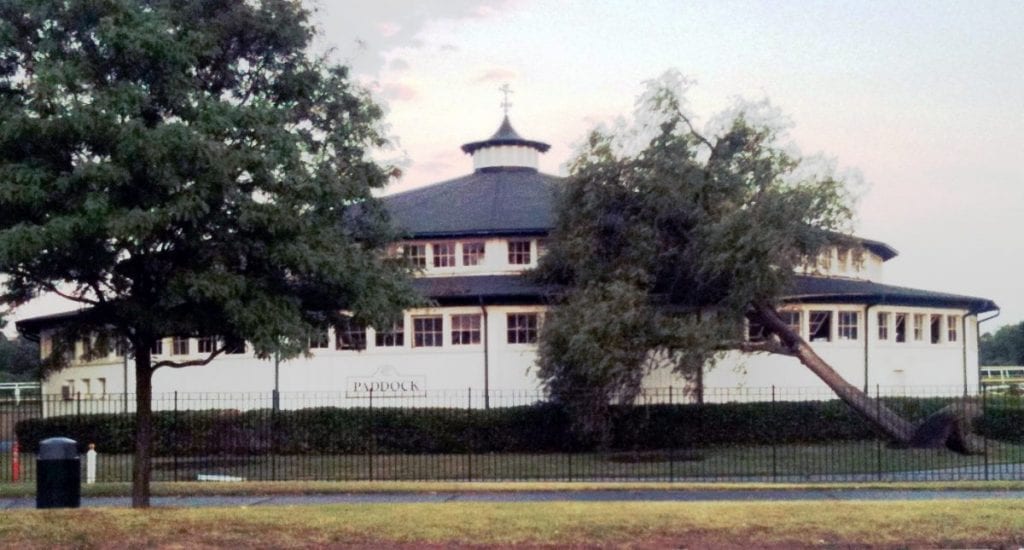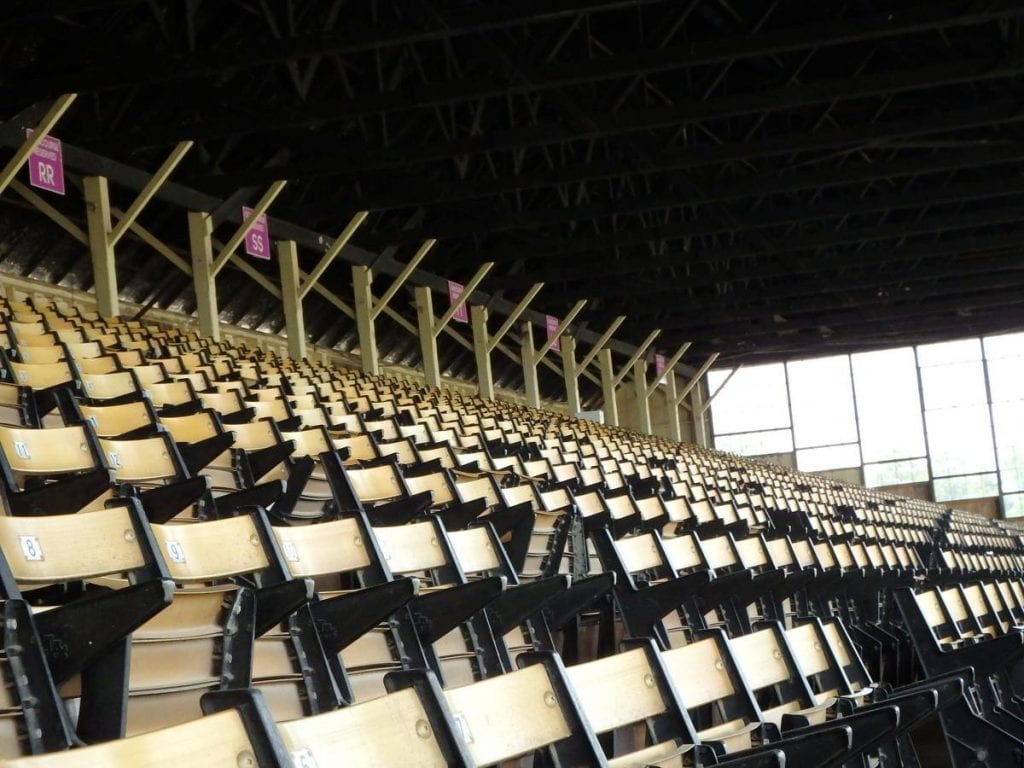Pimlico-Laurel project over budget, behind schedule. Now what?
When the Maryland General Assembly passed the Racing and Community Development Act in 2020, it was hailed by Thoroughbred industry insiders as “our Triple Crown.” The law provided the financial structure and wherewithal to permit the renovation of PImlico as a worthy home for the Preakness Stakes and the refurbishment of Laurel Park as a world-class everyday home to Maryland racing.
Or so it seemed.
Nearly three years later, there hasn’t been a shovel in the ground, the amount of money available is far short of what’s necessary, and the way forward is murky at best. The legislature in its 2022 session directed that several entities submit reports. Now the question is: what does it do with what it’s learned?
During September, reports examining the current state of the project, the feasibility of the state purchasing Laurel Park, and possible future models to organize racing in the state all were delivered. They portray an industry at something of an inflection point.
In this series, we examine some of the issues facing the project, long considered the linchpin of Maryland racing’s future.
THE DIFFICULT VARIABLE
The project to redo Pimlico and Laurel Park is behind schedule and substantially over budget, according to several reports submitted to the Maryland General Assembly in September. How these issues will be resolved figures to be a focus of the upcoming 2023 legislative session.
Numerous factors contribute to the problems, including high inflation, rising interest rates, and supply chain issues. There’s not much anyone in Maryland can do about those.
Though the Maryland Stadium Authority reports that only one of eight necessary agreements to advance the Pimlico portion of the project has been executed, people close to the project generally agree that that portion of the project is under control and, broadly speaking, within envisioned budget parameters. On the other hand, the Laurel portion is causing major strain.

“Laurel Park is the difficult variable,” said Alan Rifkin, an attorney representing the Stronach Group and its Maryland Jockey Club subsidiary in the negotiations. “Because the legislature said to prioritize Pimlico, the parties have… but the implications of that also squeeze down at the other end.”
In fact, estimates earlier this year suggest that the $375 milllion debt service authority the legislature granted the project in 2020 is nowhere near enough.
“[A]s of the end of the 2022 legislative session, a funding deficit of $175 million was identified,” reads one of the reports, which was submitted by industry stakeholders the Maryland Thoroughbred Horsemen’s Association, Maryland Jockey Club, and the Maryland Horse Breeders Association.
That’s a shortfall of approximately 47% and one that grows by the day.
What’s more, while the terrible state of Pimlico’s physical plant is well known, the plant at Laurel Park is in far worse condition than originally understood.
“Notable areas of concern have been found in all portions of the property,” one of the reports, from the Maryland Economic Development Corporation, says in what can only be described as an understatement.
Indeed. On the front side, major components of the grandstand and clubhouse, including the roof, HVAC system, plumbing, and the electrical system all “have major deficiencies which place them beyond repair,” the report said.
Yet as bad as the front side is, the backside is worse, MEDCO said. The barns, wash barns, dormitories and common buildings “contain minimal to no fire protection systems and minimal HVAC. Consultants have recommended demolishing all.”
In fact, MEDCO recommends preserving only one of all the structures on the Laurel facility site: the paddock, which, the report says, was constructed in the 1920s or 1930s, “contains many original and distinctive features,” and is eligible for listing on the National Register of Historic Places.
“EVERYTHING GETS CONSOLIDATED”
Yet, while it’s the Laurel project that’s driving cost overruns, it’s also the Laurel project that’s most vital to the state’s Thoroughbred industry, at least in the current incarnation of the plan. The 2020 Racing and Community Development Act envisioned a future in which Pimlico’s role was almost entirely to host the Preakness; Laurel would become the everyday home of Maryland racing and training.
“Remember, we’re consolidating racing at one facility,” said Maryland Thoroughbred Horsemen’s Association general counsel Alan Foreman. “It’s not like we can break that up. Under the plan, everything gets consolidated at Laurel.”
Which means that – somehow – Laurel must get renovated. That’s why Foreman characterizes the dual projects as “really tough stuff” and Rifkin calls them “the single most complicated project that any of us have ever worked on.”
When – if – complete, Laurel Park will be a significantly different facility for both patrons and horsemen. It will have what the MEDCO report calls a “right-sized clubhouse and customer structure,” a euphemism for “much smaller.” That new clubhouse will, according to the Maryland Stadium Authority, also be relocated to the opposite side of the track.
It will have new barns and “much-improved backstretch operations.” And it will have stabling for 1,600 horses, which the horsemen’s group believes it needs to support the day-to-day racing product given the impending closure of Pimlico to training..
“We’ve always estimated we need 1,600 stalls,” Foreman said.

To get there, the horsemen’s group believes it would need to have stabling at a 58-acre property, also owned by the MJC, across Brock Bridge Road from the track. While that has been portrayed by some as a sticking point, Craig Fravel, CEO of the Stronach Group’s 1/ST Racing, wrote MEDCO that the company was “willing to consider” including both the racing facility site and the Brock Bridge site in the project.
“We think we need Brock Bridge not only for stalls, but also for future growth,” said Foreman. “If we’re going to be successful, we need room for growth.”
Beyond the buildings at Laurel, the racing strips themselves will need to undergo “complete replacement and reconfiguration.” That’s in part because of concerns about the safety of the existing surfaces and in part to accommodate a new synthetic track.
In addition, the Maryland Stadium Authority also notes the desire among horsemen for a synthetic training track as “necessary to accommodate the increased volume of horses that will be utilizing the facility for daily training.”
Of course, if horses are to be stabled across the street from the racetrack, they will need some way to get from barn to track. That will presumably necessitate a bridge or tunnel of some sort.
Further complicating matters: Federal tax implications of the project improvements were called “unacceptable” in a report to the legislature from industry stakeholders and would cost the track’s owners tens of millions of dollars. Avoiding that would necessitate a government or nonprofit entity taking possession of the land.
[More on how that would work in the next installment of this series.]That will cost additional dollars in a project already financially behind the eight ball.
Will it all come together, and if so, how? One thing’s for sure: doing one part of the project and not the other is not an option.
“The Stadium Authority, I believe, said in their report that these projects are connected,” Foreman said. “They’re intertwined, interdependent, and we don’t see how you can move forward on Pimlico if you haven’t figured out what to do about Laurel because that’s where the horses are going to go. That’s a real dilemma.”
Rifkin agreed. “In some respects, there’s been a lot of movement and a lot of progress. But until you can solve for both Laurel and Pimlico, you’re still stationary,” he said.
You can read the three reports the General Assembly mandated at the Dept. of Legislative Services website. They are:
LATEST NEWS















Why is everyone still insisting that Laurel has to be the center of MD Racing? The track needs constant fixing and starts sinking and separating right after each repair.The parking lot floods as do parts of the backstretch. To say nothing of the numerous injuries to the horses.It is a very,very bad location. There is noting much to the surrounding area either. Denny’s and the Econo lodge are pretty much it. Such a shame that the Canadian company, The Stronach Group cannot see Pimlico’s potential. Besides one of the safest tracks on he East Coast (one that they can’t wait to replace) the city has exceptional dining and lodging near by. Don’t like the neighborhood? Tell that to almost 300 riders (mostly women) who PAID for the privilege of taking their horse around that storied racing oval. Is it any wonder that Governor Hogan did not sign this piece of legislation? Let’s go back to the drawing board because this plan is obsolete!